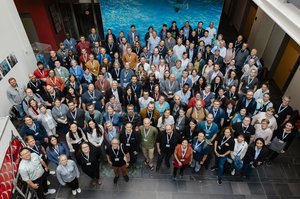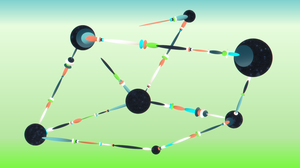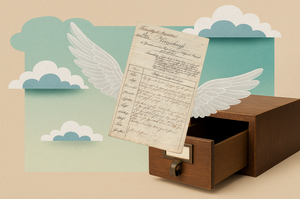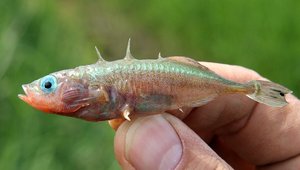Image-based biodiversity research with BIIGLE

News addition to the Research Data Commons: BIIGLE was one of the first services to be connected to the data infrastructure being created in NFDI4Biodiversity. Among other things, the web-based software makes it easier for researchers to count and annotate living creatures on images and video recordings generated by remote-controlled robots in the deep sea.
Biodiversity research is often based on counting living things. Marine biologists, for example, sometimes count everything they see in images or videos from the deep sea. Counted repeatedly over many years, they can estimate if the biodiversity of a deep sea habitat is stable or declining. Sadly, it is declining more and more often, these days, but this is a different story.
Counting things in images or videos sounds easy, right? It is not. The most interesting habitats are often the hardest to reach. The deep sea is dark, cold and the water pressure is immense. On land, a shoreline may be full of spiky rocks or plains may be too vast
Fortunately, technology has got your back. There are remotely operated robots that can explore deep sea environments many kilometers below the surface. It is even easier on land with cheap aerial drones that can capture high-resolution images and videos. But now there is another problem: Too much data. It is just too easy to capture and store imaging data today and more data is always better. But it is still hard to count things in the data. So how do we solve the problem of too much data generated with modern technology? With even more modern technology of course!
How BIIGLE helps
BIIGLE is a web-based software that helps biologists (and other people) to count things in images and videos as fast as possible. This task of looking for things, marking and describing them is referred to as image (and video) annotation. A single annotation consists of two parts, a marker which is a point or a circle, for example, that specifies the position of the object in the image or video, and a label which describes the object.
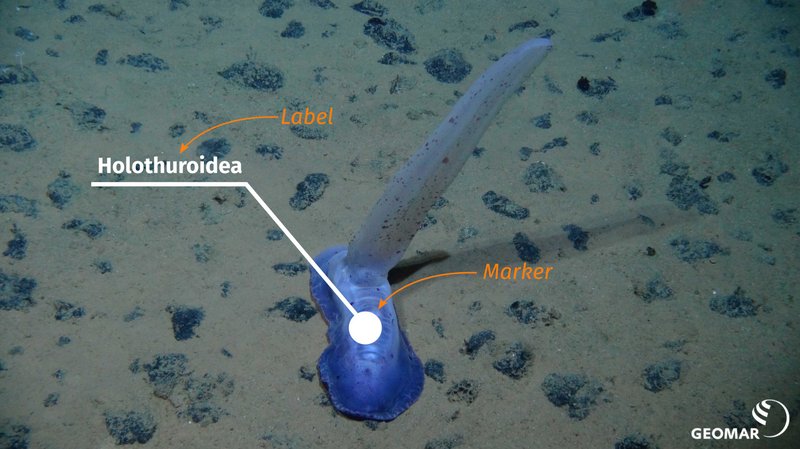
In BIIGLE, you can upload images and videos and organize them in projects and volumes. These are like directories on your computer. You can also create label trees which are collections of labels that are available for new annotations. Since BIIGLE is a web application, you can invite other people into your annotation projects and annotate together.
BIIGLE can handle very large image collections with tens of thousands of images. It can also handle very large images with tens of thousands of pixels on each edge. These are called mosaics because they are stitched together from lots of regular images. While some marine biologists create mosaics for annotation, too, others annotate mosaics created from aerial images or digital microscopy slides.

While BIIGLE is highly specialized in supporting manual image and video annotation, it also offers several features for automated annotation support. One example is the so-called Machine learning Assisted Image Annotation method (MAIA), which guides users through a multi-step annotation workflow that includes automatic object recognition by an artificial neural network. Recently, BIIGLE has also begun offering the Magic SAM tool, which is based on the Segment Anything Model (SAM). With Magic SAM, all you have to do is point to an object and the tool automatically creates a detailed annotation. As before, many annotation tasks can only be done manually, and that is not likely to change in the near future. But with BIIGLE as a specialized tool, biolog:icists now have the ability to handle the huge amounts of data that are now generated for biodiversity research.
BIIGLE as part of the NFDI4Biodiversity Research Data Commons
BIIGLE is developed by the Biodata Mining Group of Bielefeld University, led by Prof. Tim W. Nattkemper. Through the Bielefeld Institute for Bioinformatics Infrastructure (BIBI), which is a partner institution of NFDI4Biodiversity, it was selected as one of the first services in the Research Data Commons (RDC) – the ambitious concept developed in NFDI4Biodiversity for a research data infrastructure that will empower users to submit their own data, search the data of others and implement data-based projects.
To connect BIIGLE with the common infrastructure, Life Science Login is now supported to sign up for or log in to BIIGLE. Furthermore, users can now annotate images and videos stored in the Aruna Object Storage, which is developed as part of the RDC. The BIIGLE team is also committed to conduct regular training workshops the first of which already took place in April 2023 (LINK/Event). (Information on upcoming workshops can be found in our events calendar as soon as they are planned.)
While BIIGLE was originally created with a focus on marine imaging, it is now used in many other areas as well. Since the source code is open and freely available (at github.com/biigle), several research institutes maintain their own application instances. The largest public instance at biigle.de is maintained by the Biodata Mining Group at Bielefeld University and powered by the de.NBI cloud. As of the time this blog post is published, this instance hosts over 2,400 users from more than 40 countries who have created 16 million image and video annotations on 3 million images and videos.
About our guest author Martin Zurowietz
Martin is part of the team that has been developing and maintaining BIIGLE 2.0 since its release in 2017. In addition, he manages the application instance on biigle.de. During his PhD, he also worked on the development of methods for automated image annotation. This involved repeatedly collecting large amounts of training data for the algorithms by hand, so he greatly appreciates the support provided by software such as BIIGLE. Martin has been involved in NFDI4Biodiversity since 2022 and is happy to promote BIIGLE as an RDC service to new users. He also enjoys working on open source projects or admiring biodiversity in nature in his spare time. If you have any questions, he can be reached at martin@cebitec.uni-bielefeld.de.
Please enter your Mastodon instance

